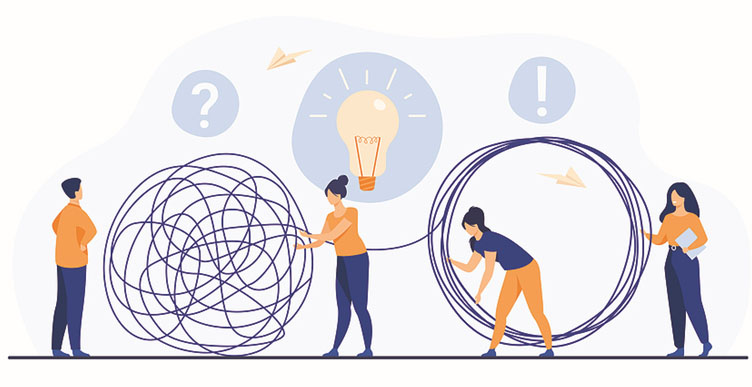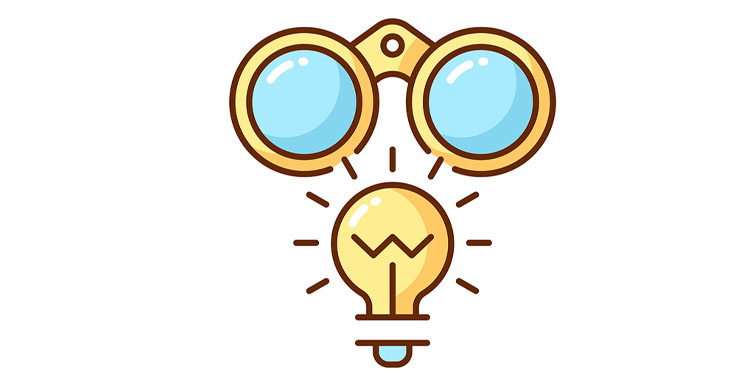Written by Sean McPheat | 

The solution selling methodology is just one type of selling. There are many others!
So, what is it and how can you do it?
In answer, let me start with the word itself. Merriam-Webster defines the word solution as:
“a: An action or process of solving a problem b: an answer to a problem…”
Solutions based selling means providing answers to problems. A solution is the answer to a problem and therefore, before you can sell a solution, you must identify a problem. If you wish to become a solutions provider and business advisor to your clients, you must first uncover the problem or problems and help educate the buyer to them.
To uncover problems your prospective client is having, begin by examining the benefits your product or service offers. However, don’t confuse benefits with solutions. A benefit is not a solution unless it solves a problem. If you are not sure what benefits apply to the customer, then ask questions to find areas your product can help. Examine the benefits.
Start with your benefits, but don’t stop there. Instead, consider the benefit and work backwards.
Ask yourself, ‘Why is this a benefit to the customer?’, and you will immediately find the problems.
As an example, let’s take a salesperson who sells the latest and greatest network printers that can scan, email, and do everything but make coffee.
The prospect has a separate standalone printer and fax machine, and both work fine.
What is a benefit the network printer offers?
Well, the salesperson knows that one benefit with the networked printer is the staff can send their work to the printer and fax it instantly with the click of a mouse, right from their workstation.
So, they try to sell the benefit:
“Mr. Prospect, with this printer, your staff can send faxes right from their own workstations”
That’s nice, but there is no motivation—because there is no solution—because there is no problem. They’ve been getting along just fine without the network printer.
However, let us take this benefit and work backward; asking what makes it a benefit. Then we can identify and uncover the problem and sell a solution!
The benefit: employees can scan from their desks.
Why is that a benefit? Because the staff will save a lot of time and money.
First, they currently must print hard copies of each document costing tons of money in paper and ink. Then they must leave their desks and walk over to the printer only to then go to the scan machine then manually scan the document, also waiting to make sure it went through successfully.
If this process takes only five minutes; multiply that by every faxed document and that by every employee and you get huge amount of money literally going to waste. Bingo! That is a big problem!
So, you do not sell the individual benefits, instead you first uncover the problem and offer a solution! This is Sales Training 101.
“Mr. Prospect, your people spend an enormous amount of time and money by having to print hard copy and go to both machines….” If the prospect does not readily see the problem, ask more questions.
“Mr. Prospect, do you know approximately how many scans your staff send out every day?” “Well, if you multiply that by five or six minutes and multiply that by the average salary…”
Once you’ve uncovered the problem, present the solution…the answer!
“Mr. Prospect, with our network printer, you solve that problem because each employee can…”
We know what the definition is. Let’s look at a simple process to explain what solution selling is.
Simply put you need to uncover a problem, and then present the solution to that problem, with these simple steps:
1. Examine the benefits of your product or service.
2. Figure out why those benefits are indeed benefits
3. Identify the problem at the core of the benefit
4. Educate the customer about the problem
5. Offer the solution to that problem.
Success leaves clues and from working with and training thousands of the very best salespeople in the world I get a great insight into what they do and how they do it.
One of the key factors that makes these people stand out from the rest is structure.
That does not mean that they are not flexible, far from it.
When I say structure, I mean that they follow a process in their client interactions or an order to make sure they get a successful outcome.
Now we’ve all heard of the million and one sales models out there and one that I like, to give you that structure for your solution selling interactions is called:
Which stands for:
Probe problems – what are they and are they important?
Amount – who much is it costing them? Time, money etc
Prioritise – how big an issue is it for them?
Actions – what have they done about it?
Solution – can you present one that solves their problem?
Ask – how to move the sale forward
This is a simple, yet very effective solution selling model to use. Ask probing sales questions to pull out the problems and then solve them.
Give it a go and it will provide you with the structure that you need for successful prospect and client interactions.

As an award winning Sales Training Provider in the UK, we offer a wide range of Sales Courses that can help you.
On our Selling Skills Training courses, we often ask salespeople ‘what exactly do you sell?’
After we’ve got through the list of products and services, they cotton on that people, their prospects, don’t buy those things. So, we get answers like ‘solutions to problems’ and ‘opportunities to expand their businesses’.
But are those obvious answers always, correct? Yes and no!
Often your products will sell themselves. People will clammer to buy simply because you have the right product at the right time for them.
But if you’re not defining the decision-making process that they are choosing to follow and identifying the timescales they are using for making those decisions, then it really doesn’t matter how good your solution is to the prospect…the answer is still very likely to be ‘no thanks, we don’t need this’
What is needed at this key point in the decision-making process?
1) A clear understanding of the decision-making process they go through
2) An appreciation of the prospect’s key business drivers
Both will give you the opportunity to link your solution with the business success the prospect wants to enjoy.
This will increase the urgency that the prospect attaches to your solution, and hence drive a quicker decision rather than have the deal stuck in your sales funnel for months on end.
The way you make a choice essential rather than desirable is to make the choice easy. You show the overall benefits outweigh the cost of action. Those costs may include what would happen if they didn’t choose your solution. And it may include the personal benefits the decision-maker may gain by making the decision now.
By determining the value to their business drivers, you take the emphasis and focus away from the products and what they do, and instead concentrate on how the future use of the products will benefit their company’s productivity or profitability.
Your solutions then become essential rather than desirable and will appeal to the logical reasons as well as the emotional selling proposition to move forward. And when people make choices based on essentials, they want them much quicker so those benefits can materialise quicker.
Concentrate on what makes people make decisions for your products and services.
Highlight these reasons at every step, and you’ll find people will make you an essential part of the business relationship.

Why wouldn’t you always offer just one solution? The solution.
Why would you think of any alternative? Isn’t it strange to think that you wouldn’t close when you have the opportunity?
Well, many people suggest that it might be better to offer up to three options and then help the prospect choose which one would be best for them.
Let’s discuss the reasons for this when selling solutions.
Humans have this innate desire to want a choice. When they have a choice they feel in control, as if they are having an influence on the solution and the benefits, they will achieve from it. Even if the choice is between Yes and No, we still like to feel that we control the situation.
Also, the optimum number of choices for someone is three. With two choices, it’s an either/or decision. With four or more choices, it can tend to overwhelm and intimidate us. But three seems to be the optimum number; not too many, not too few.
If we’re asked to choose between two options, we may feel pressured, wanting to choose the lesser of the two evils, or asking for more time to think it through.
But when we’re given three options, we tend to see the option of ‘no’ fading away.
Think of this when you next are asked to present a solution, or you feel the time is right to present the solution.
Ask yourself, are there three options available to the prospect?
If so, offer the choices, then request the prospect thinks through which be best for them or their business. This gives them a wider choice and enables you to help them consider the best alternative of the three for them and their business.
Offer three solutions. Discuss which one would be best for them. Help them make the best choice.
You’ll be surprised how often you’ll get a solution there and then, instead of ‘I’ll think about it’ and all of the other raft of sales objections that the buyer might bring up.
The solution selling method is a solid sales process to follow. Give it a go.
Happy Selling
Sean

Sean McPheat
Managing Director
MTD Sales Training
Updated on: 23 November, 2021
Related Articles

Search For More
